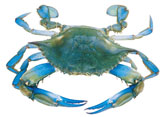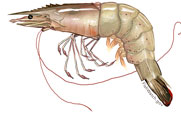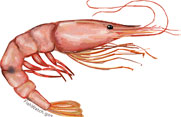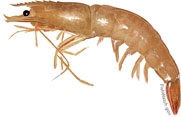- 252-745-7711
- admin@fulchers.com
Sustainability is a hot topic in most fisheries discussions being held around the world today. To fishermen this is not only our way of life but it’s also important to us to maintain this for future generations. So, we along with many others in our state work alongside biologists, regulatory agencies and gear makers to develop and modify existing methods in hopes of improving fisheries. We rely strongly on the data NOAA provides to ensure our methods are working.
NOAA Fisheries is the United States governmental organization that regulates ocean fishing in this country through implementation of the Sustainable Fisheries Act. All federally managed fisheries are required to have fishery management plans that are designed to result in sustainable fisheries. Further, NOAA Fish Watch examines each fishery/species currently managed by the federal government and provides information on the health status of the stock, including a “sustainability status” based on the best available scientific information.
Seafood is sustainable when the population of that species of fish is managed in a way that provides for today’s needs without damaging the ability of the species to reproduce and be available for future generations. If you buy fish managed under a U.S. fishery management plan, you can be assured it meets 10 national standards that ensure fish stocks are maintained, overfishing is eliminated, and the long-term socioeconomic benefits to the nation are achieved. For more information on sustainable seafood guides that are intended to rate various types of fish and shellfish based on biological or environmental criteria or ecolabels designed to provide third party certification of various sources of seafood products visit the NOAA Fish Watch Sustainability Page or the University of Rhode Island Sustainable Seafood Initiative Page on Seafood Guides.
Fisheries management in the United States is guided by the Magnuson Stevens Fisheries Conservation and Management Act first enacted in 1976. The Act created the exclusive economic zone (EEZ) which includes ocean waters out to 200 miles and U.S. federal regulations apply to those waters within the EEZ. The Act requires that fisheries be managed for conservation and benefit to the nation. The Act also established eight Regional Fishery Management Councils in the country where regulations are proposed through a stakeholder process that emphasizes public participation. These Councils make regulatory recommendations to the National Marine Fisheries Service who is responsible for implementing the regulations. Federal fisheries in the United States are some of the most highly regulated fisheries in the world. For more information about fisheries management in the U.S. click here. For more information regarding international fisheries management please visit the Food and Agriculture Organization of the United Nations.
For more information about sustainable seafood and individual federally managed fish species please visit NOAA Fish Watch.
 Callinectes sapidus
Callinectes sapidus
The blue crab’s carapace (shell) varies in color from bluish to olive green, and can reach up to 9 inches across. The carapace has nine marginal teeth on each side; the ninth teeth are strong spines. Its claws are bright blue, and those on mature females feature red tips. Blue crabs have three pairs of walking legs and paddle-shaped rear swimming legs. Males have a strongly tapered abdomen, or “apron,” that resembles an inverted T, mature females have a broad, rounded abdomen, and immature females have a triangular abdomen.
Blue crabs will feed on nearly anything they can find, including clams, oysters, mussels, smaller crustaceans, freshly dead fish, and plant and animal detritus. They will even eat smaller and soft-shelled blue crabs.
Predators include large fish like croakers and red drum; fish-eating birds like great blue herons; and sea turtles.
Blue crabs mate from May through October in the brackish waters of the Pamlico Sound. Before mating, males cradle a soft-shelled female in their legs, carrying her for several days while he searches for a protected area for her final molt. Once she molts, the pair mates. After mating, the male continues to cradle the female until her shell hardens. Males eventually leave to search for another mate, while females migrate to the saltier waters.
Females develop an external egg mass, or sponge, beneath their aprons. Each bright orange egg mass may contain between 750,000 and two million eggs. The egg mass darkens as the developing larvae consume the orange yolk. Few blue crabs live longer than three years.
The blue crab’s scientific name comes from the Greek words for “beautiful” and “swimmer.”
Male blue crabs are known as “jimmies,” while mature females are called “sooks.
 Litopenaeus setiferus
Litopenaeus setiferus
Also known as Green shrimp.
White shrimp are a smart seafood choice because they are sustainably managed and responsibly harvested under U.S. regulations.
Above target population levels.
At recommended levels.
Regulations are in place to minimize bycatch.
Year-round, with peaks in the fall.
U.S. wild-caught from North Carolina to Texas.
Flavorful and sweet. Large white shrimp don’t develop the slight iodine taste of other large shrimp.
Slightly more tender than other shrimp, and their shells are somewhat softer and easier to peel.
Raw shrimp meat is translucent pink to gray. When cooked, their shells are pinkish-red and their meat is pearly white with pink and red shadings.
Shrimp is low in saturated fat and is a very good source of protein, selenium, and vitamin B12.
White shrimp are found from Fire Island, New York, to St. Lucie Inlet on the Atlantic Coast of Florida.
White shrimp commonly inhabit estuaries and coastal areas out to about 100 feet offshore.
Young shrimp live and grow in nursery areas with muddy ocean bottoms and low to moderate salinity.
White shrimp are often found in association with other shrimp species, specifically brown shrimp.
White shrimp are crustaceans with 10 slender, relatively long walking legs and five pairs of swimming legs located on the front surface of the abdomen.
Their bodies are light gray, with green coloration on the tail and a yellow band on part of the abdomen.
Their carapace is not grooved.
Part of their shell is a well-developed, toothed rostrum that extends to or beyond the outer edge of the eyes.
They have longer antennae than other shrimp (2.5 to 3 times longer than their body length)
According to the 2016 stock assessment, the white shrimp stock in the South Atlantic is not overfished and is not subject to overfishing.
 Farfantepenaeus duorarum
Farfantepenaeus duorarum
 Farfantepenaeus aztecus
Farfantepenaeus aztecus
Above target population levels.
Regulations are in place to minimize bycatch.
Year-round, with peaks in the summer.
U.S. wild-caught from North Carolina to Texas.
Flavorful and sweet. Brown shrimp sometimes have a slight iodine taste.
Firm.
Raw shrimp meat is translucent pink to gray. When cooked, their shells are pinkish-red and their meat is pearly white with pink and red shadings.
Shrimp is low in saturated fat and is a very good source of protein, selenium, and vitamin B12.
Brown shrimp are found in the western north Atlantic from Martha’s Vineyard, Massachusetts, to the Florida Keys and along the Gulf Coast to northwestern Yucatan in Mexico.
Brown shrimp live in shallow water, generally less than 180 feet deep, but can be found in water up to 360 feet deep. As they grow, they migrate seaward to deeper, saltier water.
They travel primarily at night, especially at or shortly after dusk, and bury themselves during the day.
Inshore, brown shrimp prefer areas with muddy or peaty bottoms rich in organic matter and decaying vegetation.
Offshore, brown shrimp prefer soft bottoms of mud and sand.
Brown shrimp are crustaceans with 10 slender, relatively long walking legs and five pairs of swimming legs located on the front surface of the abdomen.
They are grooved on the back surface of the shell and have a well-developed, toothed rostrum (part of their shell) that extends to or beyond the outer edge of the eyes.
The tails of brown shrimp usually have a purple to reddish purple band and green or red pigmentation.
Brown shrimp’s growth depends on factors such as water temperature and salinity, and they can reach up to 7 inches in length.
They have a short life span, usually less than two years.
Brown shrimp are able to reproduce when they reach about 5 ½ inches long.
They spawn in relatively deep water.
Females typically release about 500,000 to 1 million eggs near the ocean floor.
Peak spawning is in spring and summer, with newly hatched shrimp entering estuaries in February and March to settle in their nursery habitat.
Brown shrimp larvae feed on plankton (tiny floating plants and animals).
Juvenile and adult shrimp feed on the bottom at night. They are omnivorous, and feed on worms, algae, microscopic animals, and various types of organic debris.
Sheepshead minnows, water boatmen, and insect larvae eat postlarval shrimp.
Grass shrimp, killifishes, and blue crabs prey on young shrimp.
A wide variety of finfish feed heavily on juvenile and adult shrimp
The Fulcher family strives to bring the freshest tasting, highest quality seafood products on the market today.
Privacy Policy | Developed by Lusca Digital